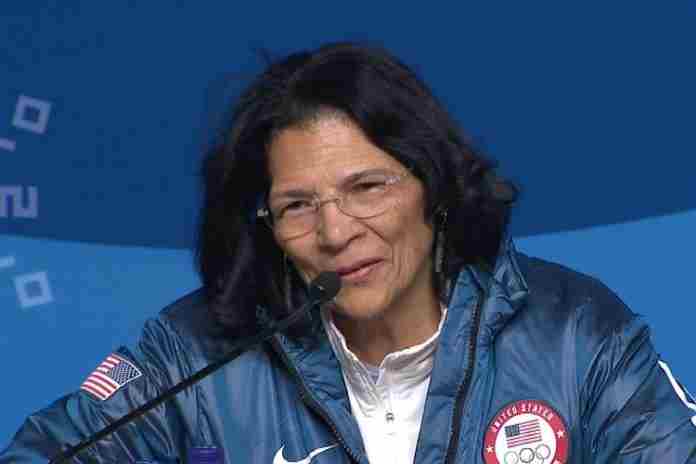It was going to happen, the only question was when. And when is now.
Yahoo! Sports obtained and published a 9 April letter from the commissioners of five Division I collegiate conferences to the head of the National Collegiate Athletic Association, asking for relief from the requirements to be classified in Division I.
The five signatories, representing the American Athletic Conference, Conference USA, Mid-American Conference, Mountain West Conference and the Sun Belt Conference, called the current situation “the direst financial crisis for higher education since at least the Great Depression.”
In specific, the letter asks “temporary relief from several regulatory requirements for a period of up to four years.” These include:
● Minimum of 16 varsity intercollegiate sports for Division I status;
● Minimum number of games/meets/matches in each sport;
● Offering a minimum of 200 athletics scholarships (or spent $4 million) annually;
● Qualifying requirements to compete in Division I championships;
● Home-game and scheduling requirements in football and basketball.
The letter continues that “Providing short-term relief from a handful of regulatory requirements will facilitate the opportunity for institutions to retrench and rebuild the financial structures of the institution. Additionally, this will allow time for the membership to engage in discussions about a post-COVID-19 world.”
The Yahoo! Sports story noted the recent elimination of men’s soccer at the University of Cincinnati and wrestling at Old Dominion. These are not catalysts, only symptoms of the financial sickness which is enveloping Division I programs.
Mountain West Commissioner Craig Thompson told reporter Pete Thamel:
“We have to be creative in these times. I cannot emphasize enough that our intent is to maintain the same level of sports sponsorships. Is there a way to work on the edges or requirements, like the minimum number of contests? How can we reduce sports without eliminating sports?”
Along with the Tokyo 2020 reset, unrest in Congress over its response to the Larry Nassar and other athlete-abuse scandals and questions about the financial viability of several National Governing Bodies, this is an oncoming crisis for the U.S. Olympic & Paralympic Committee. The U.S. elite-athlete feeder system depends on collegiate programs for the vast majority of its athletes in track & field, swimming, volleyball and wrestling – among others – and indirectly for baseball and basketball.
If collegiate competition withers, especially in track and swimming – which account for 54% of all medals won by Americans in Olympic history – the U.S. could cease to be among the top medal winners at the Games. Not important? Think about what happens to U.S. television rights sales beyond 2032 and sponsorships from American corporations. Winning means ratings, ratings mean money.
These collegiate finance issues are well known, with scholarships and travel two of the largest expenses. These can add up quickly.
Take track & field at UCLA for example. A long-time power under Jim Bush and Bob Larsen, the program has fallen on hard times this century, but is returning to competitiveness under third-year coach Avery Anderson. But consider the travel scheduled for the Bruins for 2020, in a department that has to overcome a $36 million deficit over the last two academic years:
● Indoor meets in Flagstaff, Arizona; Seattle, Washington (3 different meets); New York, New York; Albuquerque, New Mexico (2), and Notre Dame, Indiana, plus the conference meet in Seattle and the NCAA Indoors in Albuquerque. None of those are driving distance from Los Angeles.
● Outdoor meets in San Luis Obispo, Riverside, Palo Alto, Azusa, Walnut and Northridge, California, plus the conference meet in Corvallis, Oregon, NCAA Regionals at Kansas and the NCAA Championships in Texas.
If you’re looking at UCLA’s finances, how can all that indoor travel be justified when the Bruins really don’t compete that strongly in indoor track? And is it that important, anyway? The outdoor season keeps everything within driving distance except for the trip to Palo Alto and the only out-of-state trips are for the Pac-12 Conference meet and NCAAs. That’s the future.
The USOPC isn’t asleep on this, having formed its own Collegiate Advisory Council back in 2017. It includes NCAA sports heavyweights, including the athletic directors from Alabama, Duke, Florida, North Carolina, Ohio State, Oregon and Penn State.
But even with their support, there are significant sports already on life-support at the collegiate level. In the latest report on NCAA sports participation (for 2018-19) multiple Olympic-sport programs show very low levels of participation:
● Men/Fencing: 21
● Men/Gymnastics: 15
● Men/Rifle: 18
● Men/Volleyball: 22
● Men/Water Polo: 25
● Men/Wrestling: 76
● Women/Fencing: 26
● Women/Rifle: 24
● Women/Water Polo: 33
By contrast, women’s basketball has 349 schools participating in Division I and men’s basketball has 351. Some 254 schools play football, either in the Football Bowl Subdivision (129) or Football Championship Subdivision (125).
Along with wrestling, swimming and diving has a fairly low number of Division I schools participating, with 133 men’s programs and 195 women’s programs. The healthiest sports in terms of participation are basketball and track and cross country; the running sports have more than 330 women’s teams and 286 men’s teams competing in Division I.
In addition to the sports themselves, look for a close examination by each school of the number of scholarships supported. Cross country and track combined are allowed a paltry limit of 12.6 for men and 18 for women; men’s swimming tops out at 9.9 while the women get 14.
The financial crisis already well along in collegiate athletics has been exacerbated by the COVID-19 crisis and the possibility that the 2020 college football season could be canceled, partially canceled, postponed, or played without fans in stadiums will only make matters worse.
The next question is what to do about this, and the USOPC has taken its first steps to work with colleges on co-branding strategies and saluting its Olympic athletes. But the question is going to come back to money, something most collegiate athletic departments are short of, now and at least until college football – with fans in the stands – comes back in force.
Rich Perelman
Editor
You can receive our exclusive TSX Report by e-mail by clicking here. You can also refer a friend by clicking here.


























